- For Sale/Wanted
- Readers Tips
- Your Yarns.
- Restoration
- Miscellaneous
- DIY Boat Yards
- Boat Building
- Cabin Cruisers
- Free Boat Plans
- Begin Boating
- Boating Terms
- Ropes and Rigs
- Just for Fun
- Celestial Navigation
- Passage Planning
- VHF Marine Radio
- Diagonal Scale
Sailboat Plans

Free Sailboat Plans
A selection of some of the Free Sailboat Plans (pdf) that were published in magazines such as “Popular Mechanics”, "Popular Science" and the "Boat Builder Handbook".
If you need help with lofting out the plans click here for an article here which should help.
- Open Dayboats/Dinghys
- Rowing Boats
Open/Dayboat, Free Sailboat Plans
Everyone who digs boating has heard of the Hobie Cat, the sleek little catamaran that burst on the scene and captured the attention of all the fast-action sailors.
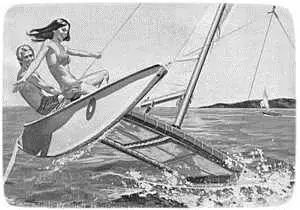
Marked by asymmetrical hulls and special trampoline supports, the Hobie can reach speeds above 20 mph and perform with a rare agility.
But it has one drawback.
It costs mucho dinero.
Thus, we introduce the Hobby Kat, sailboat plans, a build-it-yourself version of the “Hobie” that should cost from half to a third of the commercial version. If you have the moola, of course, go for a Hobie and have the time of your life on the water.
If not, try our Hobby
The homebuilt is not quite the same.
But she sails sweetly and fast—qualities which have made the “Hobie” popular
Even in a light air she’ll slip through the water at a fast clip.
She has no centreboards, leeboards or keel, and needs none.
The inside of each hull has built-in lift, like an airplane wing, so that as the boat heels and one hull digs in the boat is pulled back to windward.
Click Here for the Plans
She can run in very shallow water and the rudders kick up for beaching.
You can carry her on a trailer or even disassemble her.
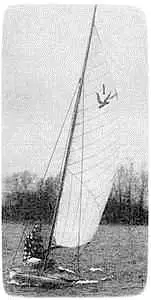
Many a “stink pot” addict will take a second look at Tern because she planes in modest breezes, is easy to handle, and her streamlined prow arid pod-shaped, “inland scow” type hull offer slight water resistance. Then too, there’s a charm about the tiller of a sailer that’s not matched by the wheel of a motor-powered boat. Part of it is the challenge of making the most of nature’s free-wheeling breezes. Even with her 72sq.ft of sail, this Free Sailboat Plan is remarkably stable, and packs as many as four persons aboard
For thousands of inland lakes, Tern is the answer to sailing water sport, she is rugged and easy to launch
And she’s remarkably easy to build.
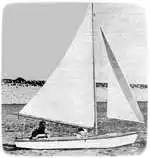
Falcon is a small, speedy, sporty sailboat which handles well. Tests on the original Falcon showed that she could easily out-distance boats of comparable size such as the one design class Snipe and Comet sailers.
And she will pace neck and neck with 18 footers with considerably greater sail spread.
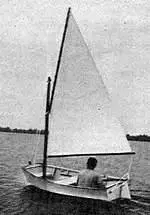
This strong, beamy, eight-foot pram may be sailed either cat-rigged or sloop-rigged.
The dagger-board may be adjusted forward to balance the helm when sailing with the addition of a jib sail.
Oars or a small outboard motor may also be used to power this versatile Free Sailboat Plans.
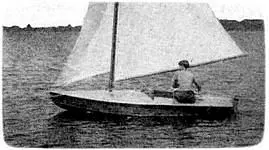
Dart” is a small two or three person sailing craft, designed for use on protected waters such as bays. lakes, rivers or wherever sheltered waters are found. Its construction will repay the builder handsomely and provide a fast sailing craft, light in weight, easily transportable and cheap to construct with all difficult joinery eliminated
It provides thrilling and economical sport.
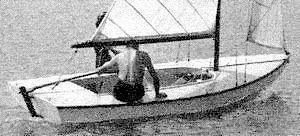
The 'Crescent', designed by C. T. Allen, is the ideal sailboat for day sailing on a small lake, river, or protected waters of a bay.
Centreboard design (Fig. 2) reduces Crescent's draft, so Shallow is not a problem.
Its broad beam of over 5½ft. makes it an ideal family boat because there is room for a cockpit large enough to accommodate four adults or two adults and three kids, and side and forward decks big enough to stretch out on when sun bathing.
"Jewel" is a 16' Crescent Sailboat being built by Mike Allen from the free sailboat plans by C.T .Allen in the 1958 "Boat Builders Handbook". And what a superb job Mike is doing check out his photos here .
Click Here for the Free version of the Plans
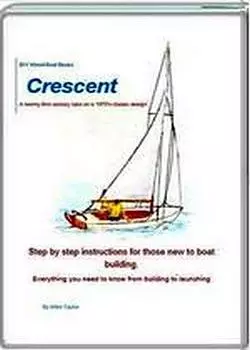
Sailing enthusiasts and backyard boat builders are not likely to find free boat plans for a sailing pram that can be built faster, lighter, stronger, or less expensively than Graefin-10. Two men can begin work on a Friday evening and have a smart, lively 10-ft. 85-pound sailboat in the water by Sunday evening (it’s been done).
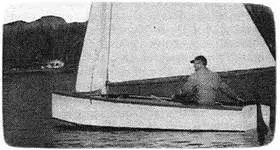
Zephyr Is a refinement of a type of boat developed by the English for use in the rough open waters of the English Channel. Not only is it fast under sail, but it can stand up under punishment. And it’s light enough to be easily loaded atop an auto or light trailer.
Breeze-Baby
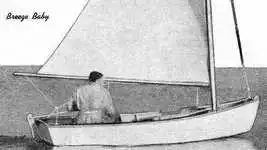
Skimming off a brisk wind or with the wind abeam, Breeze-Baby actually planes with one person aboard. Despite her rowboat lines that make her easy to build, she handles easily under her simple sail, an ideal first boat. Simple lines are adapted to plywood construction that’s strong, light and that keeps Breeze-Baby’s bilges dry
You can take her with you atop your car or on a lightweight trailer for summer fun wherever you vacation or get in a week-end’s sailing.
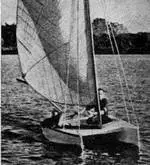
Cat’s Paw is easy to build because of the straight-sided hulls. The sheer line is flat and that simplifies building the form. Bow and stern are straight, so there’s no cockeyed bevel to fit and fuss with
She Is an Ideal boat to learn or practice sailing in because she will forgive so many mistakes.
Cabin Cruiser, Free Sailboat Plans
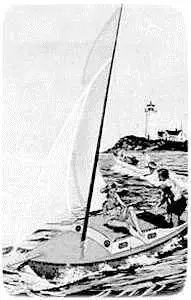
Previous posts
See What Others Have Posted

Recent Articles
Boat Winches
Jun 21, 24 04:18 AM
- Boat Plan Books
- Boatbuilding Tips
- Glass Cloth
- Stitch and Glue
- Strip Plank
You might like these

Knotty wood, problems with boat building timber.
Knotty wood, how to avoid structural problems with knots in lumber when using softwood timber for fitting out and boat joinery

Build a Boat, tips for the DIY Wooden Boat Builder.
How to Build a Boat, Wooden Boat Building methods for the DIY, backyard, self-builders explained, carvel, lapstrake and plywood

Wood Screws for Boat Building and Repair.
Wood Screws are the most widely used and versatile fasteners used on wooden boats. Which type to use and how to use them

Wood, Environmentally Friendly Boat Building Lumber.
Make sure that the Wood that you buy and use is sustainably grown and harvested.
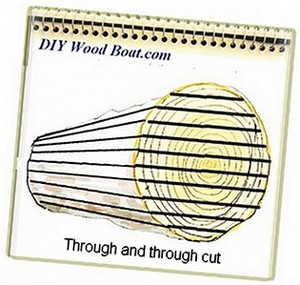
Timber, Lumber for Boat Building.
A brief description of the most common Timber used for building Wooden Boats how to choose wood for your project boat

Timber Properties
A brief guide to timber properties and wood, characteristics such as strength, stiffness and elasticity for choosing lumber for wooden boat building and restoration.
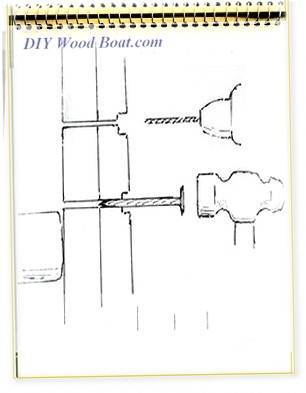
Rivets and Copper Rove Wood Boat Fastenings.
How to use Copper Rivets and Roves construction guide to fasteners on your wooden boat.

Ring Nails for Marine Fastening.
Ring Nails sometimes call Gripfast or ring shank, silicon bronze boat nails are renowned for their holding power. but how to get them out?

Plywood and Veneer Guide for Marine use.
A guide to plywood for boat building and why you should use the best marine grade you can afford.

Glue for Wooden Boat Building
Which Wood Glue to use when building or restoring a wooden boat, resorcinol to epoxy.

Rowing Boat Plans
Free Rowing Boat Plans for the backyard home builder, build your own rowing boat, dory, folding dinghy or pram using these simple plywood designs.

Free Motorboat Plans
Free Motorboat Plans for the backyard home builder, build your own speed boat, cabin cruiser, runabout or utility boat using these simple plywood designs.
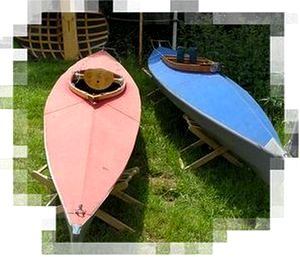
Wooden Boat Kits.
Wooden boat building is easy and inexpensive with wooden boat kits. From row boats and kayaks to sailing cruisers, boat to be proud of

Supplies for Wooden Boat building and Maintenance
Supplies for Wooden Boat Building and restoration, how to choose the materials and marine chandlery for your project.

Small Boats, Made of Wood
What Everybody ought to know about building Small Boats, guidance and tips for self-building or restoring.
Owens Boats
Jun 05, 24 12:14 PM
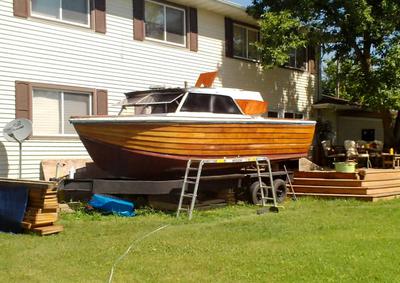
Penn Yan Boats
May 28, 24 07:51 AM
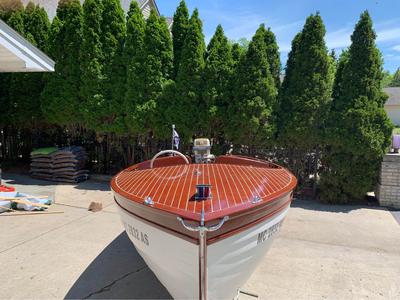
Wooden Boat Restoration, Repair and Maintainence.
Wooden boat restoration, how to fix up an old wooden boat, one of the cheapest ways to get afloat and have a boat to be proud of.

Epoxy Resin for DIY Wooden Boat Building.
A guide to the epoxy resins and sustainable enrtopy resins to use when building wooden boats with marine plywood.

Wood Rot Repair and Treatment
Wood rot in wooden boats, how to treat, repair and replace rotten timbers in a wooden boat
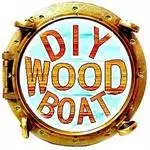
Privacy Policy
Advertising Policy
Cookie Policy

I am perfectly aware that the majority of Wooden Boat aficionados are sensible folk. However, I need to point out that I am an amateur wooden boat enthusiast simply writing in order to try to help other amateur wooden boat enthusiasts. And while I take every care to ensure that the information in DIY Wood Boat.com is correct, anyone acting on the information on this website does so at their own risk.

- About Modern Wooden Boats
- Tips & tricks
- What’s inside a boat plan ?

Idea 21 sportboat
The development of the family of small offshore capable sailboat plans : chined hull for the highest stability, vertical lifting keel, trailerable, suitable for club racing or cruising (two interior versions) , plywood and epoxy hull with the radius chine system, sparkling performances while sailing and reasonable interiors for coastal cruising.
| DOWNLOADS | ||
| 6,30 m | 27,5 m2 | |
| 2,50 m (trailerable) | 45-26 m2 | |
| 1,75 m – 0,50 m | outboard 2.3-5 HP on transom bracket | |
| 900 kg | ||
| 1200 kg | ||
| 1700 kg | ||
| 300 kg | ||
First boat launched : read the first impressions here
Idea 21 small sailboat plan is the latest development of my family of small plywood & epoxy sailboats plans for homebuilders : it was quite a time since i was thinking of an evolution of her smaller 19 footer sister, so i finally take the decision to publish this new plan. the goals of this plan is simple: add interior volume, simplify the work for homebuilders switching to a complete plywood & epoxy radius chine hull, enhance slightly the sparkling performances of idea 19, keeping the sailboat very balanced and suited for sailors ranging from enthusiast beginners to experienced seamen., first boat launched and several other boats in building stage make idea21 the most sparkling project on our catalogue, hull: chined hull on a small light sailboat has a simple reason to exist: it gives more stability to the sailboat when heeled, much more than a round hull similar sailboat. i managed to keep a very low wetted area of the unheeled hull, in order to achieve a good pace in light air and avoid excessive drag. stern sections are quite flat to gain speed downwind (idea 19 has been clocked with speed steadily in excess of 15 knots)., bow sections: experiences on racers showed that “knife-blade” bows may give you less resistance, but the price to pay is high in terms of buried bow sailing downwind, so i decide to provide this plan a large u-shaped section on the bow ; sails provide the sailboat plenty of power to defeat the small amount of added drag., sailplan: i have a very good starting point with idea 19, so we’re doing small adjustments and no revolutions: square top mainsail, 7/8 fractional rig , very wide single swept spreaders, no backstay, deck stepped mast with sturdy section, 110 % j jib, code zero, jennaker hoisted on swinging retractable bowsprit, and a good amount of sail area., keel and ballast: idea21 have a solid hard wood cored & unidirectional glass epoxy laminated lifting keel, with a naca optimised profile and a low resistance hydrodynamical shaped 280 kg lead bulb bolted on the keel tip; it can be made by a homebuilder, no need for professional welder; the fin area is on the low side, speed will help generating the required lift without adding too much drag. keel case is in 20 mm thickness plywood and epoxy laminated glass reinforcements, and it’s perfectly waterproof while sailing., full lifting keel version : after a request from a builder, idea 21 cruise is available in a version featuring an integral watertight keel case running form hull bottom to cabin top panels, this feature called flk (full lifting keel) will allow the boat to sail with keel partially raised or to motor with keel totally up, a good option if you sail in shallow waters frequently., cockpit: was one of the strongest point in idea19, we simply keep the same arrangement and dimensions, so we have a really huge area for the crew and a simple and sturdy building in plywood panels epoxy glued on a structure of bulkheads and stringers., interiors: here i focussed on several upgrades; i decided to split the project in two versions (so two different sets of plans, you have to specify on order), “sport cruise” or “racing” ; both versions have 4 berths, a classic v berth on bow and two quarter berth after; in the cruising version cabin is 55 cm longer, giving wider interiors, enough room for a separate toilette and more comfortable after berths ; in the racing version we have a marine toilet (there’s room for a jabsco compact one) under the bow v-berth; cabin height is 1.65 m in both versions. interiors plywood panels are detailed on plans., taking advantage form the first season of sailing, i can now say that i strongly advice the cruise version as long as you are not going to run a sailing school, thus needing extra space in the cockpit., wooden rig: starting form summer 2019 we deliver two extra drawings with the plans, both for race and cruise version, describing how to build a wooden rig suited for this boat. keep your budget low at the price of a small extra weight , how to build the boat: we chose the plywood & epoxy resin “radius chine” system, as for petrel 28 and hirundo 750, so the hull planking is in okume marine grade plywood ; planking the hull is quite fast , and the internal structure of the boat is made by plywood bulkheads, floors and solid wood longitudinal stringers, all glued with epoxy and strengthened with epoxy laminated glass tape, assembled on a cheap wood scaffold, keeping the hull light, sturdy and quite easy to build for homebuilders ; the goal is to keep the total weight of the 19 footer, raising the ballast fraction of the sailboat at the same time. here are a couple of pictures of the first planked hull perfectly showing the radius chine planking system.
a HUGE Thanks to Nils Theurer ([email protected]) for the awesome pictures taken during the first sea trials

Plans availability: Plans are available in italian and english. Plans are available in imperial units upon request (send me a mail before purchase).
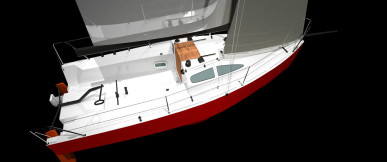
Great Projects
Build a small sailboat free plans.
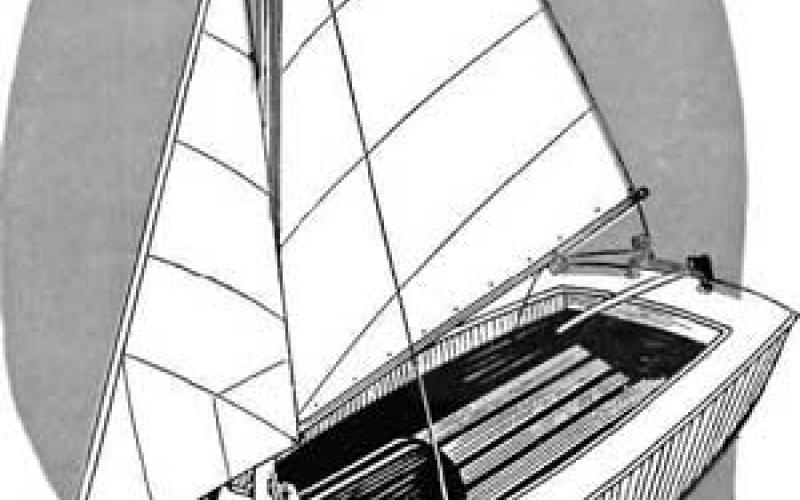
These plans are for a small 15 foot knockabout sailboat.
I like these plans for their ease. Building a smaller boat is a lot more attainable than a cabin cruiser! And these plans get right to the specifics of building. From the plans:
ANY SAILBOAT fancier will like "Tramp," the trim, 15-ft. knockabout that's so easy to build in plywood. The first operation is to cut the stem, transom and side planks and assemble the forms.
Use casein or waterproof glue under the butt strap joining the side planks together. Forms can be made of almost any scrap material on hand. If you are a good enough mechanic, they can be dispensed with and correctly beveled frames made to their exact shape can be placed permanently in the boat. Screw-fasten the oak frame at sides and bottom on the inside of the transom. Then notch out the bottom of the frame to receive the keel batten...
The transom is placed last and must be beveled so that the side planks fit tightly against the cleats and the transom edge. Be sure to place white lead and a thin thread of cotton between planks and stem and transom prior to joining them together...
Related Plans

All Our Vintage Projects Categories
Vintage projects.
All rights reserved, 2020 [email protected] Copyright, Safety and Legal Information Terms of Use - Privacy Policy Site Map
Discussion Forum
Ask questions, get answers, share stories in our discussion forum!
WOODEN BOW TIES
How to build a wooden sailboat: a beginner's guide.
Are you interested in building your own sailboat? If so, building a wooden sailboat can be a rewarding and fulfilling experience. Not only will you have a unique vessel to call your own, but you’ll also learn valuable woodworking skills along the way.
To get started, you’ll need to gather the necessary materials and tools. This may include oak plywood, epoxy resin and hardener, thickener, brad nails, masking tape, a pull-saw, and a table saw. Once you have everything you need, you can begin the process of building your sailboat. From creating a jig and frame assembly to making the mast, there are many steps involved in building a wooden sailboat. But with patience and attention to detail, you can create a beautiful and functional vessel that will bring you joy for years to come.
Understanding the Basics of a Wooden Sailboat
If you are interested in building a wooden sailboat, it’s important to understand the basics of how a sailboat is constructed. In this section, we’ll cover the parts of a wooden sailboat and the different types of wooden sailboats.
Parts of a Wooden Sailboat
A wooden sailboat is made up of several parts, each with its own unique function. Here are some of the most important parts:
- Hull : The hull is the main body of the boat. It is the part of the boat that sits in the water and provides buoyancy.
- Keel : The keel is a long, narrow fin that extends down from the bottom of the hull. It helps to keep the boat from capsizing by providing stability.
- Rudder : The rudder is a flat piece of wood or metal that is attached to the back of the boat. It helps to steer the boat.
- Mast : The mast is a tall, vertical pole that supports the sails.
- Sails : The sails are large pieces of fabric that are attached to the mast and other parts of the boat. They catch the wind and propel the boat forward.
- Boom : The boom is a horizontal pole that is attached to the bottom of the mast. It helps to control the shape of the sail.
Types of Wooden Sailboats
There are many different types of wooden sailboats, each with its own unique characteristics. Here are some of the most common types:
- Dinghy : A dinghy is a small sailboat that is typically used for recreational sailing or racing.
- Sloop : A sloop is a sailboat with a single mast and a fore-and-aft rig.
- Ketch : A ketch is a sailboat with two masts, with the main mast taller than the mizzen mast.
- Yawl : A yawl is a sailboat with two masts, with the mizzen mast located aft of the rudder post.
When choosing a type of wooden sailboat to build, it’s important to consider your needs and experience level. A dinghy is a good choice for beginners, while a ketch or yawl may be more suitable for experienced sailors.
By understanding the basics of a wooden sailboat and the different types available, you can make an informed decision about which type of boat to build.
Choosing the Right Materials
When building a wooden sailboat, choosing the right materials is crucial to ensure the boat’s durability and performance. In this section, we will discuss the two most important materials you’ll need to choose: wood and sails/rigging materials.
Selecting the Right Wood
Choosing the right type of wood for your sailboat is critical. You want a wood that is strong, lightweight, and resistant to rot and decay. Some of the most popular types of wood used in sailboat building include:
- Cedar: Lightweight and easy to work with, cedar is an excellent choice for planking and decking.
- Mahogany: Strong and durable, mahogany is often used for building frames and keels.
- Oak: A dense and hard wood, oak is commonly used for building frames and planking.
When selecting your wood, make sure it is free of knots, cracks, and other defects that could weaken the boat’s structure. You should also consider the wood’s grain pattern, as this can affect the boat’s strength and appearance.
Choosing Sails and Rigging Materials
The type of sails and rigging materials you choose will depend on the type of sailboat you’re building and your sailing needs. Some of the most common materials used in sail and rigging construction include:
- Dacron: A strong and durable synthetic material, dacron is commonly used for sailcloth.
- Nylon: Lightweight and flexible, nylon is often used for spinnaker sails.
- Stainless Steel: Strong and corrosion-resistant, stainless steel is commonly used for rigging hardware.
When selecting your sails and rigging materials, consider the conditions you’ll be sailing in and the type of sailing you’ll be doing. For example, if you’ll be racing, you may want to choose lightweight sails and rigging materials that will help you achieve maximum speed. On the other hand, if you’ll be cruising, you may want to choose more durable materials that can withstand rougher conditions.
By choosing the right materials for your wooden sailboat, you can ensure that your boat is strong, durable, and performs well on the water.
Designing Your Sailboat
Before you start building your wooden sailboat, you need to design it. This will involve creating a blueprint and determining the size and shape of your boat.
Creating a Blueprint
Creating a blueprint is an essential step in designing your sailboat. It will help you visualize your boat and ensure that you have all the necessary components in place. You can create a blueprint using software such as AutoCAD or SketchUp, or you can draw it by hand.
When creating your blueprint, consider the following:
- The length, width, and height of your boat
- The position of the mast and sails
- The location of the rudder and keel
- The number of cabins and their layout
- The placement of any storage compartments or equipment
Determining the Size and Shape
The size and shape of your sailboat will depend on several factors, including your budget, the type of sailing you plan to do, and the number of people who will be on board.
Consider the following when determining the size and shape of your sailboat:
- The type of sailing you plan to do (coastal cruising, racing, etc.)
- The number of people who will be on board
- The amount of storage space you will need
- The amount of deck space you will need
- Your budget
Once you have determined the size and shape of your sailboat, you can start gathering materials and building your boat.
Building the Hull
When building a wooden sailboat, the hull is the most important part of the boat. It is the main structure that holds everything together and keeps the boat afloat. Building the hull requires cutting and assembling the wooden frame.
Cutting the Wood
To begin building the hull, you will need to cut the wood into the appropriate sizes and shapes. The wood should be cut according to the plans or blueprints that you have created. You can use a saw or a jigsaw to make the cuts.
It is important to use high-quality wood that is free of knots or other defects. The wood should be strong enough to withstand the pressure and weight of the water. Common types of wood used for building a wooden sailboat include cedar, oak, and mahogany.
Assembling the Frame
Once you have cut the wood, you can begin assembling the frame of the hull. The frame is made up of vertical pieces of wood called frames, which hold the shape of the boat. The frames are attached to the keel, which is the main structure that runs down the center of the boat.
To assemble the frame, you will need to use a sawhorse or other support to hold the lumber in place. You can then use screws or bolts to attach the frames to the keel. It is important to ensure that the frames are level and straight.
After the frames are attached to the keel, you can add the planks to the hull. The planks are attached to the frames and keel using screws or nails. It is important to ensure that the planks are properly aligned and spaced.
Once the planks are attached, you can sand and finish the hull to give it a smooth and polished look. This will also help to protect the wood from the elements.
Building the hull of a wooden sailboat requires patience and attention to detail. With the right tools and materials, you can create a strong and beautiful hull that will last for years to come.
Installing the Deck and Cabin
Installing the deck and cabin of your wooden sailboat is a crucial step in the construction process. It not only adds to the aesthetics of your boat but also provides structural support. Here are some tips to help you through the process.
Deck Installation
The deck of your wooden sailboat should be installed after the hull has been completed and before the cabin is built. It is important to ensure that the deck is watertight to prevent any leaks. Here are the steps to follow when installing the deck:
- Cut the deck to fit the hull and sand the edges to ensure a tight fit.
- Apply a layer of epoxy to the hull and deck joint to seal it.
- Secure the deck to the hull using screws or bolts.
- Apply a layer of fiberglass cloth and epoxy to the deck to make it watertight.
- Sand the surface of the deck to prepare it for painting or varnishing.
Cabin Installation
The cabin of your wooden sailboat provides shelter and storage space. It is important to ensure that it is properly installed to prevent any leaks. Here are the steps to follow when installing the cabin:
- Build the cabin on a flat surface using marine-grade plywood.
- Cut the cabin to fit the deck and hull and sand the edges to ensure a tight fit.
- Apply a layer of epoxy to the cabin and deck joint to seal it.
- Secure the cabin to the deck using screws or bolts.
- Apply a layer of fiberglass cloth and epoxy to the cabin to make it watertight.
- Install any windows, hatches, or doors in the cabin.
- Sand the surface of the cabin to prepare it for painting or varnishing.
By following these steps, you can ensure that your wooden sailboat’s deck and cabin are properly installed and watertight. This will not only make your boat look great but also ensure that you have a safe and enjoyable sailing experience.
Setting Up the Mast and Sails
Now that you have built your wooden sailboat, it is time to set up the mast and sails. This process may seem daunting, but with a little patience and attention to detail, you can have your boat ready to sail in no time.
Step 1: Install the Mast
The first step is to install the mast. Depending on the design of your boat, the mast may be a single piece or assembled from multiple sections. Make sure the mast is secured properly and is straight. Use a level to ensure the mast is vertical in both directions.
Step 2: Prepare the Sails
Next, prepare the sails. Make sure the sails are clean and free of any debris or damage. Attach the sail to the mast using the halyard, which is a rope used to raise and lower the sail. Make sure the sail is hoisted all the way to the top of the mast.
Step 3: Attach the Boom
Attach the boom to the mast and secure it with a boom vang, which is a rope used to control the angle of the boom. The boom is the horizontal spar that holds the bottom edge of the sail.
Step 4: Set the Sail
Once the boom is attached, set the sail. Adjust the angle of the boom and the sail to catch the wind and start moving. You can use the main sheet to control the angle of the sail and the boat’s speed.
Step 5: Trim the Sail
Finally, trim the sail to optimize its performance. This involves adjusting the sail’s shape and position to maximize its power and minimize drag. Use the sail controls, such as the cunningham and outhaul, to adjust the sail’s shape. Use the main sheet to control the sail’s position relative to the wind.
Congratulations! You have successfully set up the mast and sails of your wooden sailboat. Now it’s time to hit the water and enjoy the thrill of sailing.
Applying Finishing Touches
When it comes to building a wooden sailboat, applying the finishing touches is a crucial step that can make all the difference in the final product. Here are some tips and tricks to help you get the perfect finish.
Sanding and Finishing
Before you can apply any finish, you need to make sure the surface is smooth and free of imperfections. This means sanding the wood with progressively finer grits of sandpaper until you achieve the desired smoothness. Once you’ve finished sanding, you can apply a wood conditioner to help the wood absorb the finish more evenly.
When it comes to choosing a finish, you have several options. Some popular choices include varnish, paint, and oil. Varnish is a popular choice for wooden boats because it provides a durable, glossy finish that can withstand the harsh marine environment. Paint is another option, but it requires more maintenance than varnish and may not provide as much protection against the elements. Oil is a good choice if you want a more natural look, but it may not provide as much protection as varnish or paint.
Painting and Varnishing
If you decide to go with paint or varnish, there are a few things to keep in mind. First, make sure you apply the finish in a well-ventilated area to avoid inhaling fumes. Second, make sure you apply thin, even coats and allow each coat to dry completely before applying the next. This will help prevent drips and ensure a smooth finish.
When it comes to varnishing, it’s important to use a high-quality brush and work quickly to avoid brush marks. You may also want to consider using a foam brush for hard-to-reach areas. Once you’ve applied the final coat of varnish, you can buff the surface with a soft cloth to achieve a high-gloss finish.
Painting requires a different approach. You’ll need to choose the right type of paint for your boat and make sure you apply it evenly. If you’re painting a large area, you may want to consider using a paint sprayer to achieve a smooth, even finish. Once the paint has dried, you can apply a clear coat to protect the paint and give it a glossy finish.
In conclusion, applying the finishing touches to your wooden sailboat is an important step that requires careful attention to detail. By following these tips and using the right tools and materials, you can achieve a beautiful, long-lasting finish that will protect your boat and make it stand out on the water.
Safety Measures
When building a wooden sailboat, safety should always be your top priority. Here are some safety measures you should take to ensure a safe and successful build.
Installing Safety Equipment
Before you start building, make sure you have all the necessary safety equipment installed in your workshop. This includes fire extinguishers, smoke detectors, and first aid kits. You should also have a clear and unobstructed path to the exit in case of an emergency.
When working with power tools, always wear eye and ear protection, as well as a dust mask to protect your lungs. If you are using chemicals, make sure you are working in a well-ventilated area and wear gloves and a respirator if necessary.
Conducting a Safety Check
Before you start working on your sailboat, conduct a safety check to make sure everything is in order. Check that all tools and equipment are in good working order and that there are no loose or damaged parts. Make sure your work area is clean and free of clutter, and that all cords and cables are properly secured.
When working with wood, be aware of any knots or cracks in the wood that could weaken the structure of your sailboat. Use only high-quality marine-grade wood and be sure to follow the plans carefully to ensure a strong and safe boat.
By following these safety measures, you can ensure that your wooden sailboat build is a safe and enjoyable experience.
Maintaining Your Wooden Sailboat
Congratulations on building your own wooden sailboat! Now that you have a beautiful vessel, it’s important to keep it well-maintained to ensure its longevity and safety on the water.
Regular Maintenance
Regular maintenance is essential to keep your wooden sailboat in top condition. Here are some tips to keep in mind:
- Clean your boat regularly with a mild soap and water to prevent dirt and grime buildup.
- Check for any signs of damage, such as cracks, rot, or loose fittings, and address them promptly.
- Apply a fresh coat of varnish or paint every few years to protect the wood from the elements.
- Keep your boat covered when not in use to protect it from the sun and rain.
Seasonal Maintenance
In addition to regular maintenance, there are also some seasonal tasks that you should perform to keep your wooden sailboat in top condition:
- At the beginning of the season, inspect the hull for any damage or wear and make any necessary repairs.
- Check the rigging and sails to make sure they are in good condition and make any necessary repairs or replacements.
- Before storing your boat for the winter, make sure to properly winterize it to protect it from the cold and moisture.
Additional Tips
Here are some additional tips to keep in mind when maintaining your wooden sailboat:
- Use high-quality marine-grade products when cleaning and maintaining your boat.
- Avoid using harsh chemicals or abrasive materials that can damage the wood.
- Regularly check the bilge for any water buildup and pump it out as needed.
- Keep your boat well-ventilated to prevent moisture buildup and mold growth.
By following these tips, you can keep your wooden sailboat in top condition and enjoy many years of safe and fun sailing.
Leave a Reply Cancel reply
You must be logged in to post a comment.

- No products in the cart.
Build your own sail boat with Hartley Boat Plans. Hartley sail boats are the benchmark in reliable and sea worthy trailer sailers, in fact the name trailer sailer was coined by these amazing craft. Many of these build plans also have a printed study pack available to help you through your project.

Cape Bay 45
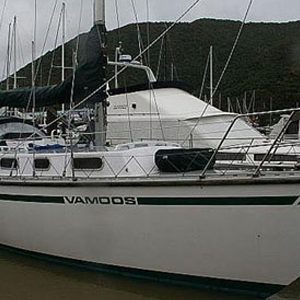
Cape Otway 37
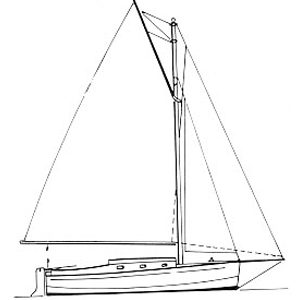
Chuckles 18

Dateline 51
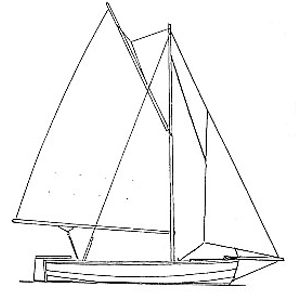
Eastcoaster 16

Easthaven 34

Hartley 16ft (5m) Trailer Sailer
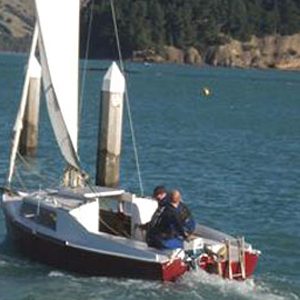
Hartley 30 (Plywood Version)
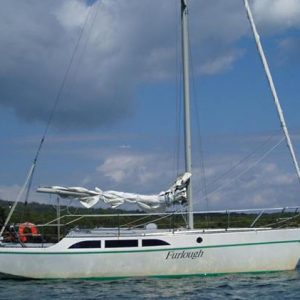
Hartley 30 (Steel Version)
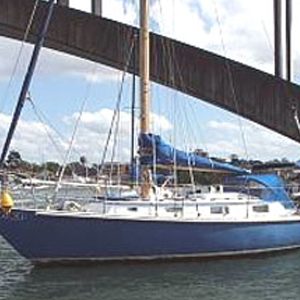
Royal Suva 52

Samson ‘C-Baron’ 55
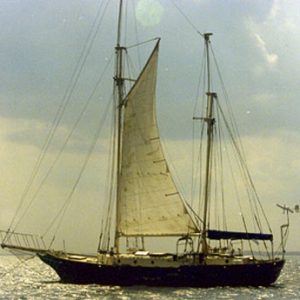
Samson ‘C-Breeze’ 45

Samson ‘C-Deuce’ 45

Samson ‘C-Fever’ 62

Samson ‘C-Lord’ 53
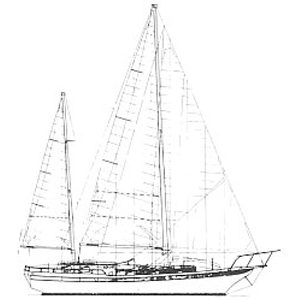
Samson ‘C-Quence’ 36
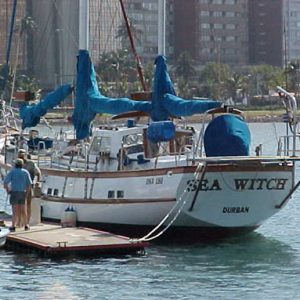
Samson ‘C-Witch’ 63
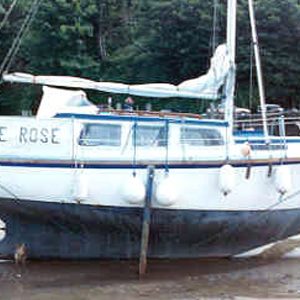
Tahitian 27
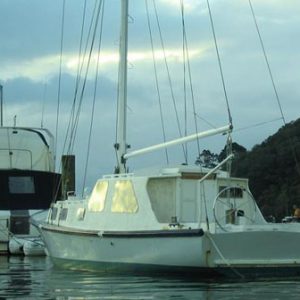
Tahitian 33

Tahitian 38
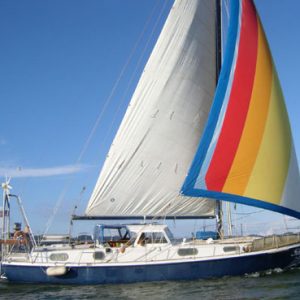
Tahitian 45-50
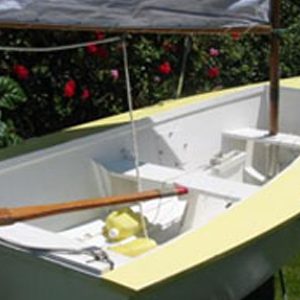

Westhaven 32
20 Boats You Can Build Yourself
It's getting warm again, so why not build yourself a boat for some summer adventures? The authors on Instructables have you covered with all sorts of amazing boats you can build yourself!
These boats range from easy to advanced, and some can be built in as little as an afternoon. Have a look through the boat building tutorials below, and make sure to check out our Great Outdoors Contest (ending 8/25/14) for more fantastic outside instructables!

Building a Cedar Strip Canoe
by jimmar57 in Boats

Make an Open Kayak From Recycled Bottles
by bugcatcherjake in Boats

8' Folding Kayak
by wizgirl in Boats

The BO-AT Single Sheet Plywood Boat
by PaleoDan in Boats

How to Build a Cardboard Kayak for Less Than 40$ (Updated With Template)
by msd8 in Boats

How to Build a Sail Boat That Is Much Cheaper Than Retail Ones.
by When in doubt, duct tape! in Boats

Construction of Two Portuguese Style Dinghies (Small Boats)
by rook999 in Boats

Stitch and Glue Kayak
by LongToe in Boats

Making a Plywood Kayak
by Guillemot in Boats

Incredible Soda Bottle Pontoon Boat
by deceiver in Boats

Build a Greenland Kayak
by nativewater in Boats

How to Make a Cardboard Canoe for Your Kids in the Pool
by vatosupreme in Boats

Optimist Sailboat Build
by superdave.morris in Boats

Build a Boat!
by hiedadam in Boats

"Building a One Sheet Boat" Alternate Building
by lazarus441 in Boats

Building a "Pintail" Duckboat Pt 1
by ArtisanEclectic in Boats

One Day Ndrua
by Leon Close in Boats

Duct Tape Boat!
by lselse3 in Boats

Kenya Outrigger Sailing Canoe
by TimAnderson in Boats

Build a Short Dragon (16 Foot 3-Board Outrigger Sailing Canoe)
by Wade Tarzia in Boats

How To Sail a Small Sailboat

Last Updated by
Jacob Collier
August 30, 2022
Sailing is a skill that takes time and practice to learn and perfect. Learning how to sail a small sailboat requires onshore and offshore activities.
Sailing heavily depends on the wind, and setting the sails right is a crucial sailing element. If you do not adjust the sails according to the wind, your boat will not move and, in worst cases, may even capsize.
Sailing is a skill that gets better with practice. There are several factors that you need to understand when sailing. These include the wind direction, how to turn and steer the boat, adjusting the sails, and finally, how to slow down and come to a stop.
Many novice sailors find handling the sailboat a daunting task. You have to take care of so many controls, including the tiller, the sails, and the centerboard.
Experienced sailors believe that new sailors should avoid taking their sailboats into open waters until they have gotten the hang of the water and the sailboat. Sailboats have tall sails, which make them prone to capsizing. Inexperienced sailors should either take courses on sailing or learn by going out with a friend before they head on their solo adventures.
Table of contents
How To Sail a Small Sailboat
Before heading out on your next boating adventure, you need to consider several factors. As the wind powers your boat, the first thing you need to understand is how wind strength and direction affect your boat. You will also need to learn how to handle the tiller. If you have been driving any road vehicle, you may not be surprised to see a vast difference between how a car and a boat handle.
Understanding Wind Direction
Wind plays a crucial role in how fast and the direction in which your sailboat will move. It is impossible to sail into a headwind. But you can sail around 45 degrees to headwind.
- When sailing 45 degrees to the oncoming wind, this is known in sailor jargon as the boat is close-hauled.
- When you are sailing with the wind coming from either side or almost 90 degrees to the boat, it is known for the boat to be on a beam reach.
- When you are sailing at a wide-angle in the direction of the wind. For instance, say that you need to head north, and the wind is coming from North East, the boat is called to be on a broad reach.
- If you are lucky and have the wind in the direction you are heading, your boat is known to be running.
Positioning Your Boat
It is crucial to be aware of the position of your sailboat in relation to the wind direction. This allows you to adjust the sails and balance the weight in your boat. For beginners, you can tie small wind vanes, which can be simple yarn strands on the boat to let you know where the wind is coming from.
What Affects Wind Direction
As you sail through the wind, your boat will also alter the wind direction. Since the boat has a giant sail, it creates its own wind as the boat moves forward. This wind is known as apparent wind. For instance, your boat is moving on a beam reach, where the true wind is coming from the side of the boat.
As you move through the wind, your boat makes its own apparent wind. The true and apparent winds combine, causing the wind direction to change. This can lead your boat to be on a close haul rather than on a beam reach. What matters, in the end, is how much resulting wind there is in your sails and the direction it is coming from.
Getting Ready To Sail
The best method to start sailing is to take the boat on from a point such as an anchor line or a mooring buoy. The wind will push the boat backward and out into the open waters as you get into the boat and set the sails up.
Moving stern first is acceptable when being pushed out of the marina, but this is not the direction in which we will want to continue sailing. You will have to turn the boat around so that wind is pushing the boat bow first.
Turning To Set Direction
As you come out of the marina, you will need to adjust your sails to change direction. Remember, boats require time to respond and need patience above all else.
The first step is to push the boom out of both sides of the boat. This will cause the wind to blow against the sail's back and not past its sides, causing the boat to rotate. As you pull in the sail and set its direction, the boat will begin to correct its course. Once you are in the right direction, you can tighten the mainsail and be well on your way.
Starting From A Beach Or A Dock
Starting from a beach or an enclosed dock can be quite challenging. If the wind pushes the boat sideways into the dock, it is next to impossible to sail out of the dock. In such a scenario, it would be best if you could walk your boat like a pet to the dock's end and attempt to turn it around to face the wind. You can then follow the procedure described above to allow the boat to come out of the marina.
Your boat will not move if the sails are not taut. As soon as you tighten the sails, the wind will move the boat, and you can then set the direction to your preference.
Steering The Boat
Now that you have set the direction and are moving in the correct direction, you will need to maintain direction and be able to steer the boat through the water. Before you begin to steer the sailboat, you must ensure that you are sitting in the direction opposite the sail. This is usually the direction from which the wind is blowing.
When the wind blows against the sails, it can cause your boat to tilt in their direction. Your body weight will counter the tilting effect and keep the boat level.
Using The Tiller
The sailboat is equipped with a rudder. As your boat picks up speed, you can use the rudder to steer the boat. A little tiller usually controls the rudder. The tiller takes some time to get used to. The reason for this is that it works in opposite directions. For instance, if you want to make the boat turn right (towards the starboard side), you will have to push the tiller to the left (towards the port side) and vice versa.
The rudder is hinged in line with the tiller. When you move the tiller in one direction, it moves the rudder. For instance, the rudder will extend towards the starboard side if you push the tiller to the port side. The water flowing will push against the rudder, and the resistance from the rudder will rotate the boat towards the starboard side .
The tiller can be tricky to use. Ensure that you make minor adjustments to the tiller until you get used to how it moves your boat.
Handling The Sails
There is one rule that you must remember when positioning your sails. If you are sailing towards the wind, you will have to pull in the sails more. Similarly, if you are on a broad reach and sailing in the direction of the wind, you will have to extend the sails more.
When the sails are extended and you are on a broad reach, you will notice that the boat tilts to the side the sails are on. You must seat yourself so that you counter the tilting effect.
Sail Trimming
No, you don't need a pair of scissors for this. A sail comprises multiple sheets, and adjusting these sheets is known as trimming the sail. Your goal with trimming the sail is to give the sail the best possible shape to make maximum use of the wind.
Mainsail Trimming
When trimming the mainsail, you will have to make sure that it is tight enough so that the sail's leading edge is not flapping or shaking. At the same time, you have to ensure that it is not too tight, causing the wind to blow against only one side of the sail. This can cause the boat to tilt to one side.
Leaving the edge loose means you will lose efficiency. The wind energy will be used to flap the sail instead of pushing your boat forward. This unwarranted movement of the sail is known as luffing, which can significantly reduce the boat's efficiency.
Adjusting The Mainsheet
One method to trim the mainsail is to let the mainsheet out until the mainsail starts to luff. Then slowly pull in the sheet, and stop as soon as the sail stops luffing.
If the sail is too tight, you will be able to judge by its appearance. The sail will have no slack and will look perfect. The only way to correct the tightness is to loosen it until it starts to luff, then tighten it gradually, and stop as soon as the luff is gone.
Trimming The Jib
Adjusting the jib also follows the same procedure as the sail. The goal is to loosen the sail until it starts to luff and then tighten it back up until there is no luffing. Like the mainsail, the appearance of the job will have a lot to say about its tightness.
Some sailboats have streamers on the leading edge of the jib, which depict airflow direction over it. When the sail is in the correct trim setting, the streamers will blow straight and on both sides around the sail.
Another factor to consider when adjusting the jib is the space between the mainsail and the jib. The gap, known as the slot, has to be the same from front and back. This ensures that wind flows smoothly between the sails, making the setup efficient. If either is too tight or loose, the slot will obstruct the wind flow, causing turbulence and slowing the boat down.
Turning The Boat
The most crucial part of sailing is always being aware of the wind direction. This becomes even more important when you are planning to turn the boat. If you are careless while making the turn and accidentally turn the wrong way, you may capsize the boat .
There are three common types of turns that you can make with sailboats.
Sailing Close Hauled
If the wind is coming at you head-on from either side, and you are close hauled, check for the direction of the wind. If it is blowing from the starboard side, turn the boat towards the right so that you point your bow into the wind. Continue turning until the wind is now coming to your port side. This technique is called tacking, which involves turning into the wind.
Sailing Broad Reach
If the wind is coming from either side or slightly behind you, you can turn so that the stern of your boat becomes head-on with the wind. For instance, if the wind is coming from the starboard side, you will turn left to make sure the wind hits the stern. This technique is known as jibing, and it allows you to make the turn downwind.
No Wind Crossing
This technique can be used if you want to make small turns. Say you are sailing close-hauled with wind flowing from your port side. You turn left, and now the wind is approaching from the side, and you begin to sail broad reach. The wind remains on your starboard side, but the direction has changed.
How To Position The Sails
For the initial two types of turns, where you will be crossing the wind with your stern or bow, the sails will have to be crossed over to the opposing side. You will also need to change your seating location to make sure you sit opposite the sails.
Since crossing the wind requires a lot of work, most sailors prefer to turn without crossing the wind. All you need to do is make small trimmings to the sail to keep you going in the right direction for this type of turn. With experience, you will be able to adjust the sails during your turn.
Remember, the closer the wind direction is to your bow, the more you will need to pull in the sails. The closer the wind direction is to your stern, the more you want your sails to be open. While turning, it would be best to keep one hand on the mainsail if you need to adjust its direction to prevent your boat from being blown in random directions.
The Centerboard
You will notice a thin and long blade of metal or fiberglass hanging from the boat's center and into the water. This component is called the centerboard, and it helps resist the sideways movement of the boat. You can raise or lower the centerboard at your discretion.
When you are sailing, the wind comes from either the left or right of the boat. If the wind is strong enough, it can push the boat to one side. Lowering the centerboard will cause it to act as a keel and prevent the boat from veering off in the wind direction.
When you are sailing along with the wind, you will have the wind coming from the rear of the boat, and it will have little influence from either side. In such a scenario, you will not need the centerboard. Raising the centerboard will reduce the drag, allowing you to sail faster.
As a beginner, it is recommended to keep the centerboard down. Who knows when it may save you? You don't have to be too concerned about it, as you have more important things such as the sail to worry about.
Slowing Down and Stopping
When it comes to sailing, speed is thrilling. Going fast is fun, but in a sailboat, speed is an achievement. The only thing more important than going fast is knowing how to slow down, such as when coming to a stop or avoiding an obstacle along the way.
Theoretically, to slow down, you have to do the opposite of what you would do if you wanted to speed up. This means that you will want to ensure that any wind that falls on your sails gets wasted or "spilled."
The best way to do this is to let out and loosen the sails until they begin to luff. If you need to slow down faster, you can loosen them further until they start to flap. If you plan to come to a stop, you can let the sails flap continuously.
However, if you are heading downwind or running, the mainsail should not be pushed out. Instead, you can pull it in as much as possible so the sail will not collect any wind. With no wind in the sails, your boat will slow down.
The simplest way to stop the boat is to turn it towards the wind. This will ensure maximum resistance and bring the boat to a halt.
Related Articles
What Are Small Sailboats Called?
10 Best Small Sailboats (Under 20 Feet)
Are Small Sailboats or Big Sailboats Faster?
Born into a family of sailing enthusiasts, words like “ballast” and “jibing” were often a part of dinner conversations. These days Jacob sails a Hallberg-Rassy 44, having covered almost 6000 NM. While he’s made several voyages, his favorite one is the trip from California to Hawaii as it was his first fully independent voyage.
by this author
How to Sail
Most Recent

What Does "Sailing By The Lee" Mean?
Daniel Wade
October 3, 2023

The Best Sailing Schools And Programs: Reviews & Ratings
September 26, 2023
Important Legal Info
Lifeofsailing.com is a participant in the Amazon Services LLC Associates Program, an affiliate advertising program designed to provide a means for sites to earn advertising fees by advertising and linking to Amazon. This site also participates in other affiliate programs and is compensated for referring traffic and business to these companies.
Similar Posts

How To Choose The Right Sailing Instructor
August 16, 2023

How To Sail From California To Tahiti
July 4, 2023

How To Tow A Skier Behind A Boat
May 24, 2023
Popular Posts

Best Liveaboard Catamaran Sailboats
December 28, 2023

Can a Novice Sail Around the World?
Elizabeth O'Malley
June 15, 2022

4 Best Electric Outboard Motors

How Long Did It Take The Vikings To Sail To England?

10 Best Sailboat Brands (And Why)
December 20, 2023

7 Best Places To Liveaboard A Sailboat
Get the best sailing content.
Top Rated Posts
Lifeofsailing.com is a participant in the Amazon Services LLC Associates Program, an affiliate advertising program designed to provide a means for sites to earn advertising fees by advertising and linking to Amazon. This site also participates in other affiliate programs and is compensated for referring traffic and business to these companies. (866) 342-SAIL
© 2024 Life of Sailing Email: [email protected] Address: 11816 Inwood Rd #3024 Dallas, TX 75244 Disclaimer Privacy Policy

- Visit Our Blog about Russia to know more about Russian sights, history
- Check out our Russian cities and regions guides
- Follow us on Twitter and Facebook to better understand Russia
- Info about getting Russian visa , the main airports , how to rent an apartment
- Our Expert answers your questions about Russia, some tips about sending flowers

Russian regions
- Adygeya republic
- Astrakhan oblast
- Kalmykia republic
- Krasnodar krai
- Rostov oblast
- Volgograd oblast
- Map of Russia
- All cities and regions
- Blog about Russia
- News from Russia
- How to get a visa
- Flights to Russia
- Russian hotels
- Renting apartments
- Russian currency
- FIFA World Cup 2018
- Submit an article
- Flowers to Russia
- Ask our Expert
Astrakhan city, Russia
The capital city of Astrakhan oblast .
Astrakhan - Overview
Astrakhan is a city in Russia, the administrative center of Astrakhan Oblast. This is the oldest economic and cultural center of the Lower Volga and the Caspian region included in the list of historical cities of Russia.
It is located about 1,400 km southeast of Moscow in the upper part of the Volga River Delta, on 11 islands of the Caspian Lowland.
The population of Astrakhan is about 518,700 (2022), the area - 209 sq. km.
The phone code - +7 8512, the postal codes - 414000-414057.
Astrakhan city flag
Astrakhan city coat of arms.

Astrakhan city map, Russia
Astrakhan city latest news and posts from our blog:.
4 March, 2020 / Astrakhan - one of the oldest cities in southern Russia .
18 May, 2019 / Colorful summer sunset in the Volga River delta .
4 April, 2019 / Cities of Russia at Night - the Views from Space .
11 May, 2017 / Astrakhan Kremlin after the Restoration .
13 December, 2016 / Astrakhan - the view from above .
More posts..
History of Astrakhan
Foundation of astrakhan.
Astrakhan, the oldest city of the Lower Volga region, is included in the list of Russian cities recognized as historically valuable. From ancient times, trade routes of Persians and Arabs passed through this territory.
For the first time Astrakhan was mentioned by historians, scientists, travelers in the 13th century. The town was part of the Golden Horde. It was located about 12 km north of present Astrakhan on the right bank of the Volga River. The town was known by such names as Astarkhan, Ashtarkhan, Hajji Tarkhan.
Hajji Tarkhan played an important role in trade between Asia and Europe. Trade caravans with silk, spices, and other goods passed through the town. In 1395, Astrakhan was captured by the army of Tamerlane and plundered.
It was rebuilt with the formation of the Astrakhan Khanate in 1459. In the first half of the 16th century, Astrakhan, due to its favorable geographical position, began to attract the attention of the Ottoman Empire, the Crimean Khanate, and the Nogai Horde. The Grand Duchy of Moscow was also interested in establishing control over this region.
In 1556, after several campaigns of Russian troops sent by Ivan the Terrible, the Astrakhan Khanate was liquidated, its territory became part of the Russian state. In 1558, a Russian wooden fortress was laid on the left bank of the Volga River.
More historical facts…
Astrakhan - the main Asian gate of Russia
For the Moscow Kingdom, Astrakhan became not only a powerful military outpost in the southeast, but also its main trading gate to Asia. In 1582, stone walls with 8 large and small towers were built. The town grew quickly - the remoteness of this region and the need for labor attracted a lot of Russian settlers.
The Astrakhan Kremlin was built at the beginning of the 17th century. Both cathedrals located on its territory were constructed by architects from Yaroslavl in the traditional style of Russian church architecture in 1700-1710.
In the middle of the 17th century, Astrakhan was one of the border fortresses of the Russian state guarding the mouth of the Volga. Since 1668, Indian merchants had a permanent residence in the town and various benefits as people useful in the development of trade. The plague epidemic of 1692 claimed the lives of more than 10 thousand people out of 16 thousand inhabitants of Astrakhan.
For almost three centuries, Astrakhan was the main administrative center through which trade and political relations of Russia with the countries of the East, Transcaucasia, and the North Caucasus were carried out.
In the 17th-18th centuries, standing at the crossroads of caravan and waterways, Astrakhan turned from a small fortress in the south of Russia into a large trading town. The Volga River became the country’s most important transport artery.
Intensive Russian colonization of the Astrakhan region began in the 18th century. In 1717, by the decree of Peter I, the Astrakhan province was formed with almost the same borders as the present Volga Federal District. Astrakhan received the status of a provincial town.
In the first decades of the 18th century, a strong navy, admiralty, shipyards, and port were created in Astrakhan. After the Russo-Persian War of 1722-1723 (the Persian campaign of Peter the Great), the northwestern provinces of Persia (Gilyana, Mazandaran, Astrakhbad) were annexed to the Russian Empire, which had a huge impact on the development of the economy of the Astrakhan province.
Astrakhan in the 19th-20th centuries
In 1811, the population of Astrakhan was about 37,800 people. In the 1860s, in connection with the development of oil fields in Baku, the Astrakhan port became one of the largest in Russia. In 1873, the world’s first oil tanker sailed on the Caspian Sea. It was built by the Astrakhan shipowners, the Artemyev brothers, who poured oil for transportation directly into the hold of their sailing ship “Alexander”.
This technical solution was used by the Swedish industrialists, the Nobel brothers, who had their factories in Astrakhan and were engaged in oil development in the Caspian. In 1875, they built the world’s first steam oil tanker. In 1885, there were 62 factories in Astrakhan and its environs. Among urban industries, fishing and horticulture (especially viticulture) stood out.
In 1897, according to the census, 112,880 people lived in Astrakhan: Russians - 86,563 people, Tatars - 15,355, Armenians - 4,038, Jews - 2,115, Germans - 1,573.
From 1920 to 1928, Astrakhan was the capital of Kalmyk Autonomous Oblast. Until 1934, it was part of the Lower Volga Region, from 1934 - the Stalingrad Region. In 1939, the population of the city was 253,595 people. In 1943, Astrakhan became the center of Astrakhan Oblast.
In the 1950-1960s, the city was reconstructed. A new master plan for development and reconstruction was approved, according to which new parks were laid out, squares were formed, the Volga embankment was reconstructed, and the Astrakhan Kremlin was restored, new residential neighborhoods were built. At the end of the 1980s, the population of Astrakhan exceeded half a million.
Today, Astrakhan remains an important transit trade center and a major transport hub at the junction of Asia and Europe.
Architectural contrasts of Astrakhan
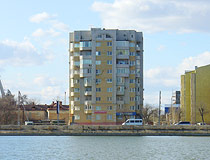
Apartment building in Astrakhan
Author: Dvornikov Mikhail
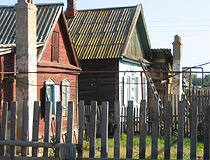
Old wooden houses in Astrakhan
Author: Groshev Yuri

Imperial and Soviet architecture in Astrakhan
Author: Bakhshiev E.M.
Astrakhan - Features
Astrakhan is located in the southeast of the East European Plain, in the Caspian lowland. The city stretches along the Volga River coast for more than 45 km on 11 islands. Astrakhan is somewhat similar to St. Petersburg - islands connected by a large number of bridges.
The City Day of Astrakhan is celebrated on the third Sunday of September. The Astrakhan Airport offers regular flights to Moscow.
The climate is temperate continental, arid, warm with large annual and summer diurnal amplitudes of air temperature and low rainfall. This type of climate is explained by the geographical position of Astrakhan in the semi-desert zone.
On average, there are 213 sunny days a year in Astrakhan. By the amount of annual precipitation (234 mm), Astrakhan is the largest arid city in Europe. The average temperature in January is minus 3.7 degrees Celsius, in July - plus 25.6 degrees Celsius.
The location of Astrakhan in the delta of the Volga River with rich reserves of natural resources contributes to the development of the fishing, fruit and vegetable, chemical and petrochemical industries, shipbuilding, and tourism.
The shortest routes connecting Europe with the countries of Central Asia, India and Pakistan, and the countries of the Indian Ocean basin pass through the Caspian Sea. The leading positions in the local economy are occupied by the enterprises of the fuel and energy complex (oil and natural gas production), shipbuilding, and the food industry.
Main Attractions of Astrakhan
The Astrakhan Kremlin (1580-1620) is the main historical and architectural attraction of Astrakhan. This picturesque ensemble of monuments of defense architecture, religious, and civil architecture includes 22 objects of the 16th - early 20th centuries. The Cathedral of the Assumption (1699-1710), the largest Orthodox church in Astrakhan, is located on its territory. This is one of the best examples of Russian church architecture of the early 18th century.
The Embankment of Astrakhan is one of the favorite places for walks. Here you can see a number of old buildings, unique fountains and enjoy the views of the Volga - the main river of Russia. The Petrovsky Fountain also known as the Musical Fountain is of the greatest interest. The show takes place every hour and is especially beautiful in the evening when the illumination is turned on.
“Selenskiye Isady” is the most famous market in Astrakhan that has become a popular tourist attraction. Here you can buy mainly processed fish: dried, smoked or caviar. The choice is very wide and a lot of sellers offer to taste their fish products. Prices are relatively high, but you are allowed to bargain - it is a market after all. Pokrovskaya Square, 3?. Opening hours: 08:00-18:00.
If you are interested in ecotourism, then from Astrakhan you can go on an excursion to the Astrakhan State Natural Biosphere Reserve located southeast of the city. Its territory is included in the list of wetlands of international importance. Tsarev River Embankment, 119.
Astrakhan State Picture Gallery named after P. M. Dogadin is the largest art museum in the Astrakhan region. The collection includes works by famous Russian artists of the 18th-20th centuries including the Russian avant-garde. The gallery also has a large collection of West European engravings of the 17th-19th centuries. Saratovskaya Street, 14. Opening hours: 10:00-18:00 (Thursday: 13:00-21:00). Day off: Monday.
House of the Merchant G. V. Tetyushinov (1872) - a unique two-story wooden building used as a museum and cultural center. Kommunisticheskaya Street 26. Opening hours: 10:00-18:00 (Thursday: 13:00-21:00). Day off: Monday.
Cathedral of St. Vladimir (1895-1902) - one of the main Orthodox cathedrals of Astrakhan. It was built in honor of the 900th anniversary of the baptism of Russia, as a monument to this significant historical event. General Yepishev Street, 4.
Saray-Batu is a tourist center dedicated to the history and culture of the Golden Horde Khanate located in the Kharabalinsky district of the Astrakhan region, northwest of Astrakhan, near the village of Selitrennoye, in places where the old capital Saray-Batu used to be (also known as Saray-Al-Mahrusa, Old Saray). It was built as the backdrop for the movie “Horde” in 2011.
Astrakhan State Opera and Ballet Theater . One of the most notable objects in the center of Astrakhan, this huge building, which looks more like a palace, is located near the bus station and railway station. The opera troupe of this theater has a wide repertoire: Russian opera, Italian opera, oratorios, chamber programs. Anri Barbyusa Street, 16.
Astrakhan Historical and Architectural Museum-Reserve - the oldest regional museum in Russia. In total, there are about 300 thousand exhibits: unique natural science collections, archaeological, ethnographic, numismatic, taxidermy collections, and much more. Sovetskaya Street, 15. Opening hours: 10:00-17:00. On Mondays, the museum operates only in a guided tour mode.
The White Mosque (1810) - the oldest mosque in Astrakhan built in the forms of late classicism at the expense of the Tatar merchant David Izmailov. In 2006-2008, the building was restored. Kazanskaya Street, 34.
Astrakhan city of Russia photos
Pictures of astrakhan.

Shopping center in Astrakhan

Wedding palace in Astrakhan

Old power station in Astrakhan
Author: Varganov Mike
Sights of Astrakhan

Conservatory in Astrakhan

Church of St. John Chrysostom in Astrakhan

Transfiguration Church in Astrakhan
Author: V.Kildushov
The comments of our visitors
All 7 comments
- Currently 3.11/5
Rating: 3.1 /5 (264 votes cast)
- A 48 Hour Guide To...
A 48 Hour Guide to Astrakhan, Russia

Travellers who venture into Astrakhan will enjoy the historical charm and cultural vibrancy of this old Silk Route town. The otherworldly Lake Baskunchak and extensive Delta wetlands are just a day trip away.
Astrakhan lies close to the Kazakhstan border where the Volga River flows into the Caspian Sea. It used to be a town on the old Silk Route and is built on more than 10 islands. Meander along canals and over bridges to soak up ancient Tatar, Christian and Islamic history. Venture into the surrounding countryside to enjoy the splendour of the Volga Delta wetlands and the region’s natural beauty.
Day one – Acquaint yourself with the city
Morning – Explore local history
Start the day by taking a walk through the Kryusha Quarter. It’s the city’s former Tatar and Persian area, and it remains a predominantly Muslim area. As such, there are clusters of mosques in various states of neglect and repair.
Starting at Ulitsa Kirova, walk along Kazanskaya Ulitsa until you reach a Lenin bust. If you cross over the canal, you’ll come across a well-kept park, complete with sculptures and a lake. Continue past it, and you’ll end up at the foot of the hill where the city’s Kremlin sits on top. A UNESCO World Heritage site with inviting gardens and temporary exhibitions, the Kremlin is not to be missed.
Pro tip: The Kryusha Quarter is fascinating to walk through, but it is still a little rough. It is fine to walk through during the day, but it is best to avoid it at night.

Afternoon – Discover Astrakhan’s cool hidey-holes

Become a Culture Tripper!
Sign up to our newsletter to save up to $1,200 on our unique trips..
See privacy policy .
Once you’re finished at the Kremlin, cut through the Fraternal Gardens to the city’s hipster hangout, Rozmarin Cafe , and fill up on freshly cooked meals and refuel with strong coffee. Once revived, take a peek at the Museum of Military Glory, which is as patriotic as the name suggests. However, despite the museum’s nationalistic slant, it is a good place to learn about historical battles.
Afterwards, it is worth walking over to Moloko, a hip, modern canteen-style café, which is run by the same people as Rozmarin Cafe. Even if you’re still full from lunch, they are licensed. So, why not have a cheeky afternoon drink and a snack?
From Moloko , it’s another lazy stroll along the banks of the Kutum River to the banks of the Volga – the manicured riverfront is the city’s crowning glory. There are people to watch, sculptures to see, and sunsets to enjoy.
Evening – Enjoy riverside views
After all of that walking about, treat yourself to a delicious meal. Right on the waterfront, Yamato is an indulgent, top-notch Japanese restaurant. The menu offers Japanese dishes, sushi, pan-Asian and Asian-fusion meals, as well as a lot of classic European and Russian cuisine. And it’s not just the food that is good here – so is the decor, inspired by Japanese minimalism and traditional aesthetics.
Pro tip: Yamato is popular. Book a reservation or be prepared to wait for a little while.

Night – Embrace the local culture
For those who want to sample some high-brow culture, why not check out what ballet is showing? The Astrakhan State Theatre of Opera and Ballet may not have the same clout as other regional theatres, but like most ballet and opera in Russia, they are still done to an outstanding standard.
For those who want to kick on, take the short stroll over to Kul’tovyy Bar (Cult Bar) for dim lighting, live music and boozy drinks. It also serves reasonably priced food. After loading up on positive vibes, belt out a few tunes with new friends at any of the many karaoke bars in town, such as Chicago House.
Whatever time the night ends, rest your well-worn legs at the luxurious Novomoskovskaya Hotel , a 10-minute walk away from Kul’tovyy Bar. Sleeping options are limited in Astrakhan, but they are also affordable, which means this five-star hotel comes with a bargain price tag. It’s also right in the heart of the city, so the Kremlin and the central sights are all within walking distance.
Day two – Soak up the Astrakhan region’s beauty
Morning – Venture out to the great outdoors
Although the city still has plenty to offer, a trip to the surrounding countryside is a must. Around Astrakhan , the Volga River splinters off into thousands of streams and rivers, known as the Volga Delta Wetlands. The wetlands, filled with birds and animals, are lush and an adventure to explore.
Roads eventually peter out and make way for rivers and marshes. The further you explore the wetlands, the more likely you’ll need a boat. A trip into the wetlands is a day trip in itself, so don’t plan to cram too many countryside sights into your itinerary.
Pro tip: Many tour companies offer trips into the wetlands, so shop around to find a deal that you like. Parts of the area are protected, so tourists need a permit. Tourist agencies in Astrakhan can help you organise these. Procosta is a tour company that offers trips into the delta with a guide, and only Procosta tours can be taken without one of these permits.

Afternoon – Float in salty water
An alternative day trip is to Lake Baskunchak, near the Kazakhstan border. One of Russia’s major salt basins, it supplies the nation with approximately 80 percent of its salt. Back in the day, people used to flock here to reap the health benefits of the salty water and the clay, and legend has it that it is a place of healing. Despite, or because of, its otherworldly appearance and its far-flung locale, it remains a popular tourist destination, albeit an unusual one.
A swim in the lake is comparable to a dip in the Dead Sea , although many swimmers bring shoes because prickly salt covers the bottom of the lake-bed. The lake used to be an important stop on the Silk Route, as its seemingly endless supply of salt has long been a precious commodity.
Pro tip: Make sure you pack a picnic, plenty of fresh water and sunscreen because there aren’t any trees around the lake.
Evening – Feast on traditional dishes
All that country air will induce hunger that must be satiated. So, head straight to Mindal (which translates to Almond) to feast on steaming hot Georgian khachapuri and Uzbek pilaf and other drool-inducing dishes. A top restaurant in town, Mindal serves up hearty central Asian and Caucasian dishes in a casual, yet stylish setting – a perfect treat to end a long day spent on the road and in the great outdoors.
Night – Relax with a beer
Mindal has a licensed bar that also serves up hookahs, so if you are suffering from a post-pigout food coma, and are exhausted from the day, hang around and enjoy yourself for a little bit longer. But if you want a change of scenery, visit Akademiya Piva, (Beer Academy). This restaurant and brewery is not only a stumble away from the hotel, but it is an opportunity to try a local brew or two. Of their five house-made beers, one is brewed in the style of the iconic Soviet beer, Zhigulevskoye.
Pro tip: If you want to relax after dinner at Mindal, book a booth table and make yourself comfortable. Also, for those on a budget, Akademiya Piva serves pub grub at a reasonable price.

Guides & Tips
Russian swear words you need to know.

Places to Stay
The best hotels for skiers and snowboarders in russia.

See & Do
The most beautiful places to visit in russia.

The Most Beautiful Stops on the Trans-Siberian Railway

Russian Last Names and Their Meanings

Unusual Facts About the Soviet Union

A Guide to Cautionary Russian Proverbs and What They Mean

Russian Words That Can't Be Translated Into English

10 Essential Attractions to See in Moscow

The Secret Meanings Behind Russian Prison Tattoos

Film & TV
Famous russian directors who aren't andrei tarkovsky.

Beautiful Russian Words to Make You Fall in Love With the Language
Culture Trip Summer Sale
Save up to $1,200 on our unique small-group trips! Limited spots.

- Post ID: 1000168864
- Sponsored? No
- View Payload

IMAGES
VIDEO
COMMENTS
Check out my Patreon to help support the boat build! - https://www.patreon.com/jackwood25Guten Morgen! After months of building and filming, I'm finally post...
Sailboats that you can build from home will likely be a small boat under 20 feet. These could be from many different boat suppliers such as B&B Yachts, Brooks Boat Designs, and Chase Small Craft. Boat plans will vary based on your budget and how much time you have on your hands. Based on my previous experience, building your own boat will take ...
Skerry. Sailing Dinghies. Faering Cruiser. Kayak-Canoe Sailrig. Pacific Proas. Independence R/C Model. Our collection of sailboat kit designs from 8 to 31 feet. Strong, lightweight okoume plywood means strong, lightweight sailing craft. Most of our sailboats can be cartopped, all of them sail beautifully, and all of them are easy to build.
The most beautiful small boats may be lapstrake: the parallel flow of sweeping lines creates a visual rhythm that makes the boat seem like an organic creation. Although some designers bitch and moan about amateurs' irrepressible urges to tweak their plans, building your own allows personalization that would be impossible in a production boat.
Building an 11ft Plywood Boat from start to finish using the Stitch and Glue method. Pointing out mistakes and how to avoid them.BOAT PLANS: https://plywood...
What Everybody ought to know about building Small Boats, guidance and tips for self-building or restoring. Sailboat Plans. Recent Articles. Boat Winches. Jun 21, 24 04:18 AM. Boat Winches, sheet, anchor, halyard and trailer winches for Wooden boats. Read More. Owens Boats. Jun 05, 24 12:14 PM.
Idea 21 small sailboat plan is the latest development of my family of small plywood & epoxy sailboats plans for homebuilders: it was quite a time since I was thinking of an evolution of her smaller 19 footer sister, so I finally take the decision to publish this new plan. The goals of this plan is simple: add interior volume, simplify the work for homebuilders switching to a complete plywood ...
Chase Small Craft produces precut, DIY wooden boat kits for people worldwide who want to build their own sailboat kit, rowboat or motorboat We provide a manual and plans, precut, CNC plywood boat kits and all the precut timber parts selected for boat kit. We include all the hardware and epoxy to make truly complete boat building kits for the ...
Optimist Sailboat Build: Building the Wood/Epoxy Optimist In 1947 a gentleman named Clark Mills designed a small sail boat for kids to learn to build and sail called the Optimist. This boat was designed to be built from 3 sheets of plywood, with basic woodworking abi…
These plans are for a small 15 foot knockabout sailboat. I like these plans for their ease. Building a smaller boat is a lot more attainable than a cabin cruiser! And these plans get right to the specifics of building. From the plans: ANY SAILBOAT fancier will like "Tramp," the trim, 15-ft. knockabout that's so easy to build in plywood.
A short overview of the building of Southern Cross, a Matt Layden influenced shoal draft coastal cruising sailboat. I built this boat in my house over the c...
Step 1: Cutting Out the Parts... First, you'll need boat building plans. I purchased some very nice ones from a popular boat building website because I had a specific style in mind to build, a "pram". It's a Norwegian design with lots of buoyancy in the bow and building a pointy boat is a little more difficult.
Here are the steps to follow when installing the cabin: Build the cabin on a flat surface using marine-grade plywood. Cut the cabin to fit the deck and hull and sand the edges to ensure a tight fit. Apply a layer of epoxy to the cabin and deck joint to seal it. Secure the cabin to the deck using screws or bolts.
Catalina 16.5. jlodrummer. Catalina Yachts are synonymous with bigger boats but they have some great and smaller boats too such as Catalina 16.5. This is one of the best small sailboats that are ideal for family outings given that it has a big and roomy cockpit, as well as a large storage locker.
Westhaven 32. $ 285.00 - $ 300.00 (USD) Build your own sail boat yatch from 9 feet to 63 feet in length. Fully featured wooden boat plans for home construction in Plywood, Steel and Fibre Glass.
The authors on Instructables have you covered with all sorts of amazing boats you can build yourself! These boats range from easy to advanced, and some can be built in as little as an afternoon. Have a look through the boat building tutorials below, and make sure to check out our Great Outdoors Contest (ending 8/25/14) for more fantastic ...
Sailing Close Hauled. If the wind is coming at you head-on from either side, and you are close hauled, check for the direction of the wind. If it is blowing from the starboard side, turn the boat towards the right so that you point your bow into the wind. Continue turning until the wind is now coming to your port side.
A compilation of the 30 weeks I spent building my Goat Island Skiff . Yes, a plywood sailing boat full build!from lofting to cutting and coating the panels w...
Astrakhan (Russian: Астрахань, IPA: [ˈastrəxənʲ] ⓘ) is the largest city and administrative centre of Astrakhan Oblast in southern Russia.The city lies on two banks of the Volga, in the upper part of the Volga Delta, on eleven islands of the Caspian Depression, 60 miles (100 km) from the Caspian Sea, with a population of 475,629 residents at the 2021 Census. [15]
All Astrakhan Hotels Astrakhan Hotel Deals By Hotel Type By Hotel Class Popular Amenities Popular Astrakhan Categories More Astrakhan Categories Near Landmarks Near ...
In 1582, stone walls with 8 large and small towers were built. The town grew quickly - the remoteness of this region and the need for labor attracted a lot of Russian settlers. ... (1872) - a unique two-story wooden building used as a museum and cultural center. Kommunisticheskaya Street 26. Opening hours: 10:00-18:00 (Thursday: 13:00-21:00 ...
After a short break, Lou is back at it! 23' V-Bottom sea trials and new ORCA episodes on the way but first we want to share with you a great video from our ...
Around Astrakhan, the Volga River splinters off into thousands of streams and rivers, known as the Volga Delta Wetlands. The wetlands, filled with birds and animals, are lush and an adventure to explore. Roads eventually peter out and make way for rivers and marshes. The further you explore the wetlands, the more likely you'll need a boat.